
views
Peeling and Cutting the Squash

Wash the squash thoroughly under cool or warm running water. Rinse your butternut squash under the kitchen faucet. Rub it with your hands or a vegetable brush get any dirt or stickiness off. You’ll be peeling the squash, but you should still wash it to remove any dirt or gunk on the skin that could get on your hands and get transferred to the pieces of squash flesh that you’re preparing.
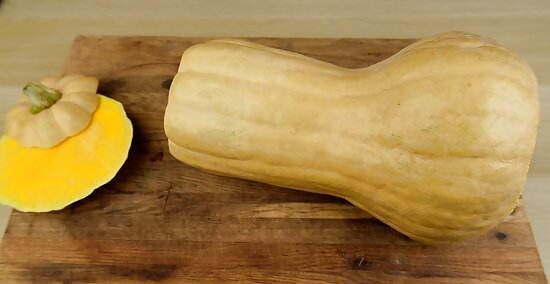
Use a sharp chef’s knife to cut off both ends of your butternut squash. Lay the squash on its side on a large cutting board and hold it steady. Cut the top stem end and the bottom base end off. The top end of the squash is the narrower end and the flatter, wider end is the base. You don’t have to cut off a lot from the ends. About ⁄4 in (0.64 cm) or so is fine.

Strip off the peel of the squash using a vegetable peeler. Hold the squash steady on its side with one hand. Grab a vegetable peeler in your other hand and start peeling off the hard skin from top to bottom, all the way around the squash. Make sure you peel off all the white-ish peel and are left with just the orange flesh underneath. You might have to go over some parts more than once to get all the skin off. As an alternative to a vegetable peeler, you can use a sharp paring knife. Just be very careful not to cut towards your fingers or any other body parts.
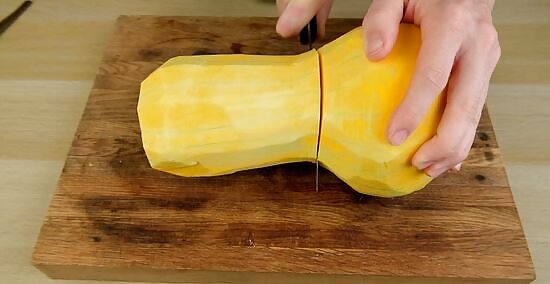
Slice the neck off the base of the squash to expose the seeds. Use your chef’s knife to cut horizontally across the squash where the skinny top meets the fat base. Cut off a bit more from the top of the base if you still don’t see the seeds. Alternatively, stand the squash up on its bottom end and cut it in half straight down the middle to expose the seeds. Whatever works best for you is fine!
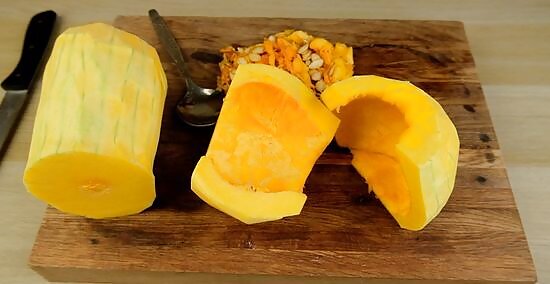
Scoop out the seeds from both halves using a metal spoon. Plunge a soup spoon or other metal spoon into the stringy seed cavity. Scrape out all the seeds and stringy bits until you get down to the smooth flesh. Discard the seeds or rinse them off and roast them for something to snack on.
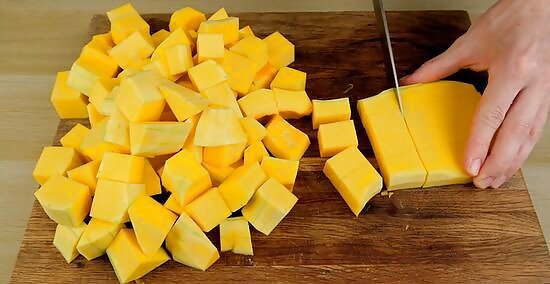
Slice the squash up into approximately 2 in (5.1 cm) cubes. Cut the neck and base in half vertically, then cut them into 2 in (5.1 cm) wide strips. Turn the strips and cut them crosswise into 2 in (5.1 cm) wide cubes. You don’t have to make the cubes perfect. Just try to make the pieces about the same size so they cook evenly.
Cooking the Squash in Boiling Water
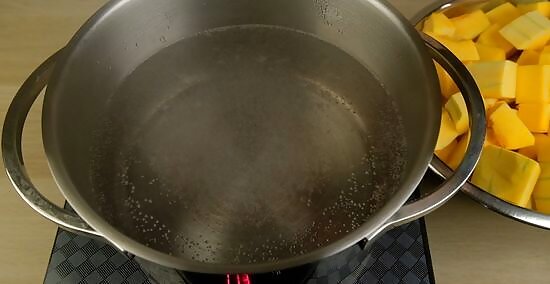
Fill a large pot halfway with water and bring it to a boil. Pick a pot that can easily hold all the cubed butternut squash without getting filled up more than halfway. Pour cold water into the pot until it is about half full, then put it on a burner over high heat and wait for it to boil. You can use a soup pot or a Dutch oven for this. Anything that can hold enough boiling water to cover all the butternut squash will work just fine.

Put the squash in the boiling water and lower the temperature to medium. Carefully transfer your cubes of butternut squash into the pot of boiling water. Reduce the temperature to medium until the water is simmering instead of fully boiling. Be very careful not to splash boiling water on yourself. Stand back from the stove and slide the pieces in slowly or lower them into the boiling water with a slotted spoon.
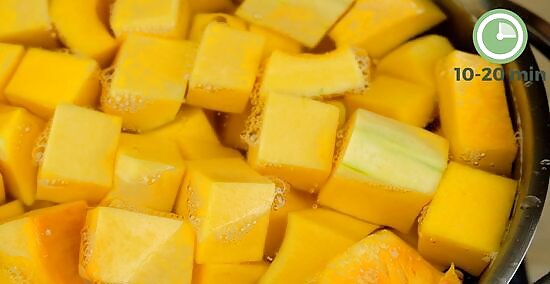
Boil the squash for 10-20 minutes until it’s fork-tender. Check the squash by poking a piece or two with a fork after 10 minutes. Keep checking the tenderness every 5 minutes or so and turn off the burner when the fork slides easily into the squash. Don’t worry about overcooking the squash. It’s better to cook it for longer until all the pieces are very tender than to stop boiling it too soon and end up with undercooked pieces.
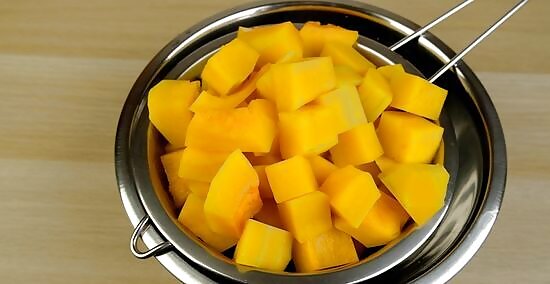
Strain the squash through a colander or mesh strainer. Pour the contents of the pot out carefully through a strainer or colander over your kitchen sink. Shake the squash around a couple of times, then let it sit and drain for about 5 minutes to get rid of all the excess moisture. Squash absorbs a lot of water when it's boiling. Draining it gets rid of the excess and prevents the it from getting too mushy or watery.
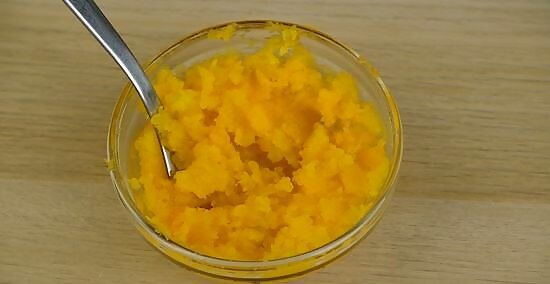
Combine the squash with other ingredients to prepare it. Mash the tender pieces of squash together with butter, salt, and pepper using a fork to make a simple mashed butternut squash side dish. Or, use a blender to combine the squash with chicken or vegetable broth and aromatics like garlic, onions, olive oil, and herbs to make a soup. You can use a food processor or hand mixer to puree boiled butternut squash instead of mashing it. You can eat boiled butternut squash on its own, but it will taste pretty bland. If you want to eat it plain, try tossing squash with a little olive oil, salt, and pepper.















Comments
0 comment